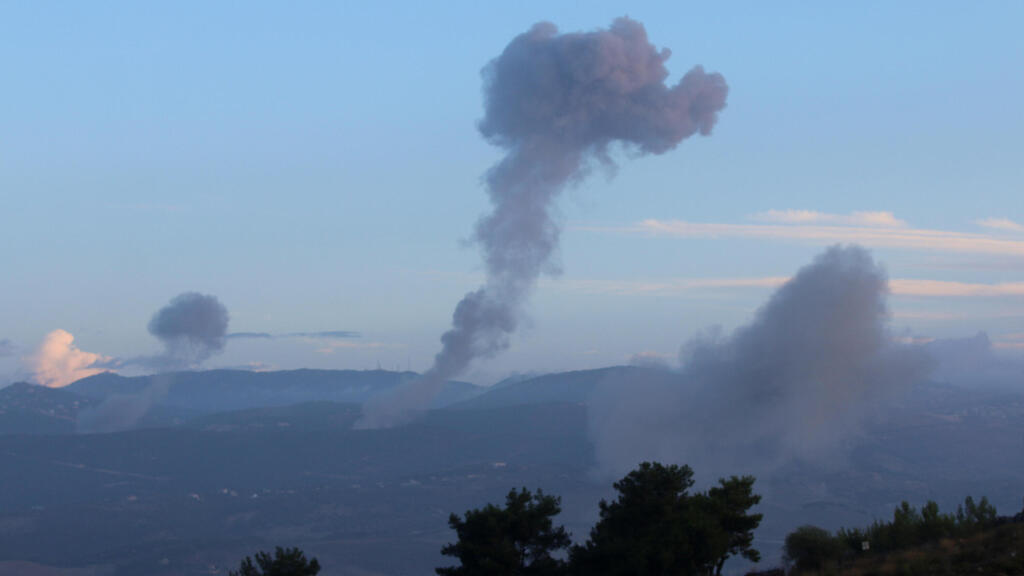Getting your Trinity Audio player ready...
Security officials gave a glimpse behind the scenes of the intense waves of IDF strikes in Lebanon over the past few days — two of which began on Monday targeting about 300 Hezbollah sites, according to the IDF.
Lebanese reports indicated that 100 individuals have already been killed in Monday’s Israeli strikes, with over 300 injured. “Every house or site that’s attacked is one where weapons are present,” security sources told Ynet in a conversation on Monday.
3 View gallery


IDF Chief of Staff LTG Herzi Halevi at the Northern Command base
(Photo: IDF Spokesperson's Unit)
According to them, these operations have been planned by the IDF for years, specifically by the IDF Military Intelligence Directorate, the Northern Command and the Israeli Air Force. “This operation involved hundreds of fighter jets simultaneously striking Hezbollah’s locations, infrastructures and launch sites,” they noted.
Before the targets are bombed by hundreds of fighter jets across Lebanon, they’re examined by the Military Intelligence Directorate and the Northern Command.
The strikes themselves are managed from the Northern Command's war room’s Air Force command rooms where Northern Command chief Major General Ori Gordin is stationed. “The IDF Chief of Staff, who has been in the IDF’s headquarters in Tel Aviv since morning, is overseeing the operation.”
The IDF has been urging Lebanese civilians to distance themselves from buildings known to house Hezbollah’s weapons since Monday morning. Meanwhile, local Lebanese reports indicated that "hundreds have fled southern Lebanon."
3 View gallery


Northern Command chief Major General Ori Gordin (center)
(Photo: IDF Spokesperson's Unit)
As part of Israel’s efforts to move civilians away from targeted areas, Lebanese sources claimed Israel has taken over radio stations and sent messages to citizens urging them to evacuate immediately. Lebanon reported over 80,000 calls were received in the country calling on residents to evacuate.
Rocket fire toward northern Israel has continued in recent hours, with the IDF Spokesman’s Unit reporting approximately 25 launches from Lebanon toward the Sea of Galilee and Safed areas. “Air defense soldiers successfully intercepted several launches and impacts were identified in open areas and near Kibbutz Ami’ad,” the IDF said in a statement.
The military also reported that following alerts in the Lower Galilee, about 10 launches crossed from Lebanon. Several impacts were identified in Israel, including one in Giv’at Avni. Two firefighting teams responded to a house hit by a rocket, searching for anyone trapped inside and disconnecting electricity to prevent fires. The house’s residents were in a safe room during the hit, avoiding injury.
The attack’s peak may still be ahead. A security official told Ynet on Monday the military will launch a “large-scale” attack across rural areas of Lebanon. According to him, Hezbollah’s possible response could include expanding its range of fire, possibly targeting “selected sites in Tel Aviv.”
During a situational assessment on home front preparedness held on Monday, Defense Minister Yoav Gallant said, “In this new phase of the war, home front resilience is the key that allows the IDF to fight, achieve successes and strike the enemy. This has been ongoing for nearly a year and is being done impressively.”
He added, ahead of the expected offensive, “We’re deepening our strikes in Lebanon, and this course of action will continue until we achieve our objectives — returning the northern residents to their homes safely.”
“This success also depends on the home front’s behavior and that’s why we’re coordinating and focusing our efforts. The difference between success and failure lies in citizens following the guidelines and finding shelter promptly — this has saved lives.”



